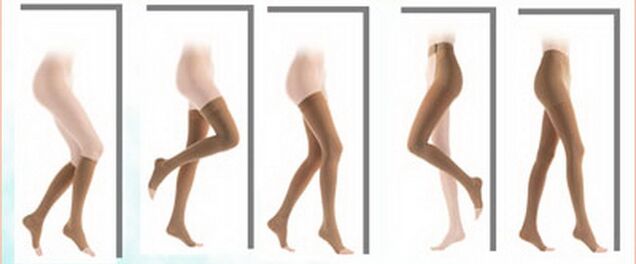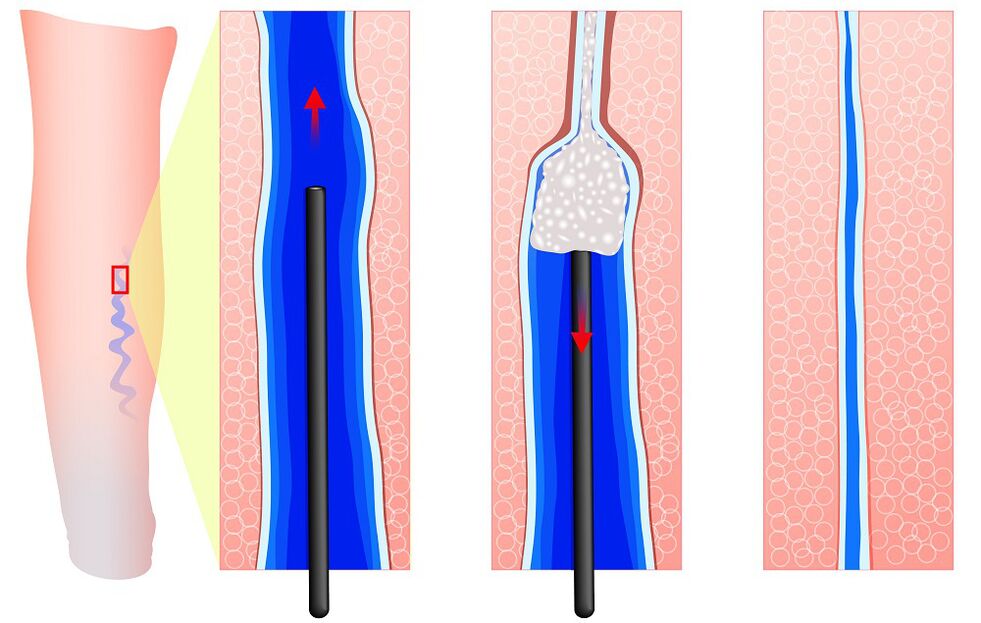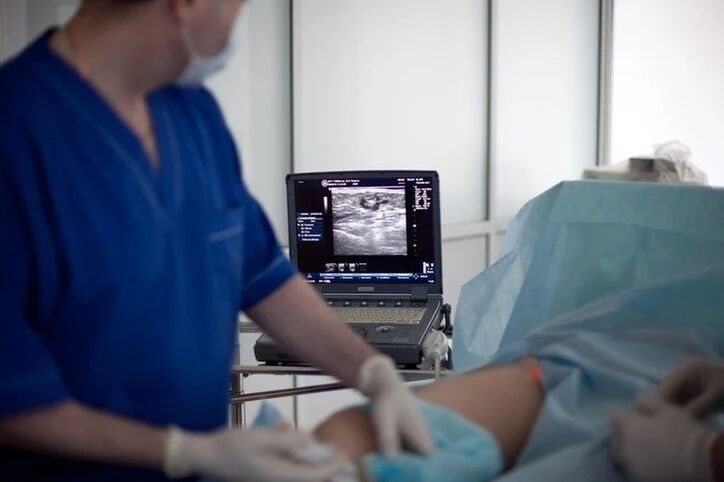
Varicose veins are a dangerous disease that brings with it many pathological processes. Treatment of varicose veins in the legs begins with lifestyle changes and medical procedures. They can: relieve the symptoms of varicose veins, prevent complications, improve the appearance of the lower extremities.
Your doctor may recommend switching to a diet and losing excess weight if varicose veins in your legs do not cause many symptoms. When there are severe signs of dilated veins in the legs, therapeutic and surgical treatment is prescribed.
Compression jersey
Compression stockings for varicose veins have a beneficial effect on the pressure on the veins.
Types of compression stockings for varicose veins:
- Support Stockings. Have the least amount of pressure on the veins. They are securely attached to the leg and do not slip. Compression is evenly distributed.
- Knee High Socks. It can be used by both men and women. The compression is evenly distributed across the lower part of the limb.
- Elastic band.The compression is distributed unevenly, so the pressure on the vein can be strong or weak. However, many people use these types of therapeutic knitwear because they are affordable.

Sclerotherapy
Leg vein sclerotherapy is the most common treatment for spider veins and varicose veins. The doctor uses a needle to inject a liquid chemical into a vein. The chemical agent causes the walls of the veins to swell, stick together, and seal the veins to close. This stops blood flow and the vein turns into scar tissue. After a few weeks, the varicose veins should disappear. This procedure does not require anesthesia and can be performed in a doctor's office. You can return to your normal activities immediately after treatment.
Treatment for varicose veins in the legs is usually done every 4 to 6 weeks. Compression stockings may be worn after sclerotherapy to aid healing and reduce swelling. This procedure is very effective when done correctly.
Possible complications after sclerotherapy:
- Burning red areas of the skin, bruising where the injection was given. Brown outline spots or a group of small red blood vessels around the treated vein.
- Blood clots that enter a vein and cause inflammation. This is not dangerous. Swelling can be relieved by applying heat and taking aspirin. The doctor can remove blood clots with a small puncture at a follow-up visit.
All complications, as a rule, disappear soon after treatment.

There is ultrasound sclerotherapy for varicose veins (or echo sclerotherapy). This method is used in ultrasounds to ensure proper needle insertion. It may be useful in treating veins in the lower extremities that may not be visible on the surface of the skin.
Possible side effects: skin ulcers, swelling or deep vein thrombosis (a potentially dangerous blood clot).
Laser
In some cases, laser can effectively treat spider veins and small varicose veins. Laser treatment for varicose veins in the legs sends very strong bursts of light through the skin and into the veins. No needles or incisions are used, but the heat from the laser can be quite painful. Cooling helps reduce pain.
Laser treatment for varicose veins in the legs lasts 15 to 20 minutes. It usually takes 2 to 5 treatments to eliminate spider veins on your legs. You can return to your normal activities immediately after treatment.
Laser coagulation is not an effective method for leg varicose veins larger than 3 mm.
Contraindications: Not all skin types can be safely treated with laser.
Possible side effects after laser treatment of varicose veins:
- Redness or swelling of the skin immediately after treatment, which disappears within a few days.
- In fair skin, the side effects disappear in 1-2 months.
- Burns and scars from poorly performed laser surgery, although this is rare.

Subcutaneous methods
Subcutaneous techniques have replaced surgery in most patients with severe varicose veins.
The doctor places a very small tube, called a catheter, into the vein. A small probe is placed through the tube. A device at the tip of the probe heats the inside of the vein and closes it. The device uses radiofrequency or laser energy to seal the vein. This procedure can be performed using only local anesthesia.
Healthy veins around the closed one take over normal blood flow. Varicose vein symptoms improve.
Operation
Surgery is primarily used to treat very large varicose veins.
Types of surgery for varicose veins include:
Surgical intervention. In this treatment, problem veins are completely removed from the leg through small incisions in the skin. Removal of a vein does not affect blood circulation in the lower extremity. This operation requires general anesthesia and must be performed in an operating room. Restoration of veins after surgery takes 1 to 4 weeks. This type of surgery is generally safe. Leg pain is the most common side effect. Other possible problems include:
- Breathing problems due to anesthesia.
- Severe bleeding and blood pooling.
- Wound infection, inflammation, swelling and redness.
- Damage to the nervous tissue around the treated vein. This damage can cause numbness, burning, or changes in sensation around the scar.
- Formation of blood clots. These clots can travel to the lungs and heart. Anticoagulant medications can be used to reduce the chance of these dangerous blood clots occurring. But it can also cause bleeding.
PIN removal. In this treatment, an instrument called a PIN extractor is inserted into a vein. The tip of the PIN extractor is sewn to the end of the vein and when removed, the vein is removed. This procedure can be performed in an operating room or an outpatient center.
Phlebectomy procedure.In a phlebectomy, small incisions are made in the skin and hooks are used to remove varicose veins from the leg. Patients can return to their normal activities the day after treatment. Possible side effects include minor bruising and temporary numbness.
Prevention
To prevent the appearance of the first signs of varicose veins (spider veins in the legs), there are many effective preventive measures:
- Exercise regularly to improve muscle tone, circulation, and vein elasticity. Do special exercises for blood vessels and take regular therapeutic walks or runs.
- Control your weight to avoid putting too much pressure on your lower extremities.
- Do not cross your legs for long periods of time when sitting.
- Try to avoid injuries that may increase the risk of varicose veins.
- Elevate your legs while resting as much as possible.
- Do not stand or sit for long periods of time. If you must stand for a long time, shift your weight from one leg to the other every few minutes. After sitting for a long time, you need to get up and move around a little or take a short walk.
- Avoid wearing tight clothing that narrows your waist or puts pressure on your groin and legs.
- Avoid wearing high heels for long periods of time.
- Eat healthy, fiber-rich foods. Eating fiber reduces the likelihood of constipation, which can contribute to varicose veins. The diet should consist of fresh fruits, vegetables, whole grains and bran. A salt-free diet will help prevent the swelling that causes varicose veins.
Modern treatments for varicose veins and spider veins of the legs have very high success rates compared to traditional surgical procedures. Ongoing treatment and prevention can help keep this problem under control.























